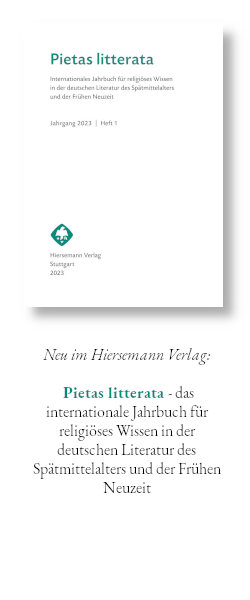Therapie des Begehrens?
‹Carmen Buranum› 62, Constantinus Africanus und die Ästhetik der mittellateinischen Liebeslyrik
Schlagworte:
Carmen Buranum 62, Carmina Burana, Medieval Latin love lyric, literature and medicine, Constantinus Africanus, pneumatology and love lyric, poetologyAbstract
Frank Bezner: Therapy of Desire? ‹Carmen Buranum› 62, Constantinus Africanus and the Aesthetics of Medieval Latin Love-Lyric. The main purpose of this article is to present a new reading of ‹Carmen Buranum› 62 ‹Dum Diane vitrea›, which has been called «the most celebrated of secular Latin lyrics» (Peter Dronke). At the core of this interpretation (which will review past and current scholarship on the poem) is the attempt to identify the overlooked ‹discursive background› against which it was written: the theory and therapy of desire epitomised by Constantinus Africanus in his influential medical treatises. As will be shown, this background sheds light on ‹Carmen Buranum› 62 in more than one respect: it helps solving some textual and linguistic problems (such as the ominous presence of Orpheus); it provides a systematic matrix for the integration of love and sleep, as well as clarifying the much-discussed physiological terminology in the poem; and it, finally – and surprisingly – contributes to what has so far been understood as the poem’s most original if not unique feature: the lyrical mood of the beginning stanzas with their suggestive impressionism and synaesthesia-driven blurring of the boundaries between sleep and wakefulness. At the same time, the poem, via its often-stated ruptures in tone and language, reacts against, and complicates, the idea of a therapy of desire, thus becoming the first specimen in the literary and aesthetic negotiation of medical knowledge, preparing the ground for the well-known poetics of physiology and imagery developed in later vernacular traditions.


